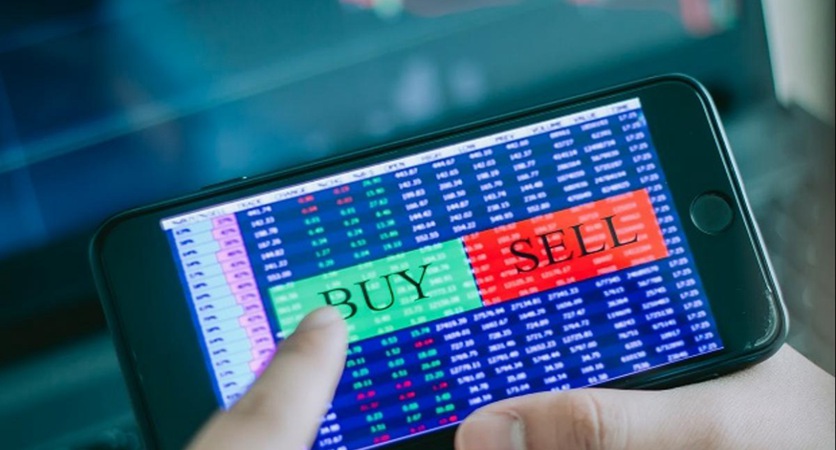How To Invest In (Buy & Sell) US Stocks?

Hey, hey! We get it – you're curious if you can invest in US stocks, right? Well, good news for you!
You don't have to be a US citizen to trade on their stock market. If you looking to explore US stock market opportunities, there is the right place.
Investing in US stocks can be a great way to diversify your portfolio. You might be thinking, "how can I invest in US stocks?"
Don't worry, we'll cover everything you need to know to get started with confidence. keep reading!
Why Invest in US Stocks?
Investing in US stocks can offer a range of benefits for you.
First off, it can provide diversification by adding a different geographic region to one's investment portfolio. That means spreading out your investments across different countries, which helps reduce risk and potentially improve returns.
Also, the US stock market is the world's largest and most developed. Investing in US stocks allows you to access a wide range of industries and companies, including some of the world's most well-known companies, that may offer more stable investment opportunities.
Additionally, the US stock market has a history of strong long-term performance, potentially providing higher returns compared to other market. For example, investing in the S&P 500 can offer exposure to a diversified portfolio of 500 large-cap US stocks, which has historically delivered strong returns, growing more than 2000% from 1980 till now, with an average annual return of 11.7%.
Benefits of Investing in US Stocks
1. Access to a wider variety of innovative stocks
US stocks offer exposure to some of the most innovative and profitable companies in the world, such as Apple, Microsoft, Amazon, and Tesla. These companies are constantly creating new products and services that shape the future of various industries and sectors.
2. Access to a strong and resilient economy
The US economy has a Gross Domestic Product equal to a quarter of the world's economy, so the size alone makes the US economy have a very big impact on the rest of the world. Whatever happens in the US stock exchange affects the world financial market. Therefore, you can benefit from a more robust economy by buying stocks in the US.
3. Potential for higher returns
Yes, individuals who buy and sell US stocks have access to more profitable companies. The US stock market has a history of strong returns over the long term. While past performance doesn't guarantee future results, investing in US stocks can offer the potential for higher returns compared to other markets.
4. Higher Trade Volumes
The majority of US stocks are traded on different exchanges all over the world. As a result, the global market enables US stocks to have larger volumes. The large volumes traded in US stocks lead to more liquidity. Investors can therefore buy and sell their stocks easily.
How to Invest in US Stocks (even if you’re not in the U.S.)
Investing in US stocks isn't like solving Algebra; you have to follow some steps, and voila!
Here are the steps you need to take:
1. Research and select US Stocks
Before investing in any stock, it's essential to do your research and understand the company's background, financial performance, and industry trends.
The best way is to have a watch list of the stocks on the NYSE and Nasdaq. The following U.S. stocks are the popular us stocks I shared with you, not investment advice.
This list of well-known us stocks is incomplete; many international companies are available for investment. Just click here to easily trade the US stocks and indices on Mitrade platform today!
2. Identify a Legit Stock Broker
Ready to open an account to take your investing game to the next level? Choosing a legit stock broker that offers access to US stock markets is key. Many stock brokers are happy to work with international clients like you.
Look for a brokerage that's regulated by reputable authorities and offers a user-friendly trading platform that suits your needs. That way, you can trade with ease and peace of mind.
Some popular online brokerages that offer access to US stocks include TD Ameritrade, Tiger, and Interactive Brokers. They offer a powerful trading platform that is suitable for stock traders. They offer some of the lowest commission rates in the industry, which can help you save money on transaction fees and commission charges.
Mitrade also offers U.S. shares trading online, but the products are stock CFDs, which is different from buying individual stocks. It enables you to buy and sell shares online without ever owning the underlying asset. The benefit is you can trade both rising and falling markets and access international stocks with 24-hour trading.
Share CFD is a flexible tool for both active traders and short-term investors to potentially profit from market movements.
Deposit method | Visa/Mastercard, Skrill, wire transfer |
Leverage | Stock 1:1 - 1:5 |
Regulations | Australian Securities and Investments Commission (ASIC) 398528 The Cayman Islands Monetary Authority (CIMA) 1612446. |
Want to trade US stocks and keep it simple? Look no further than the Mitrade app! With direct market access, you can go long or short on both rising and falling markets.
3. Check All the Requirements
You don't have to be a US citizen or be in the US to buy and sell US stocks. Opening a US stockbroker account is simple and can be done online.
● Visit your preferred stock broker website and register.
Identify an online trading account that offers US stocks and sign up. Ensure that you complete your profile by providing your accurate details.
● Deposit cash into your trading account.
There are many ways of depositing cash into the account. However, go for the method that is compatible with your account.
● Open an Order
You can either open a buy or sell order depending on the action you want to take. If you believe that a stock will be profitable in the future, open a buy order. Alternatively, open a sell order if you think that the price will drop.
Conclusion
Investing in US stocks can be a smart way to diversify your investment portfolio, and you have several options for investing in US stocks.
If you don't know where to start, you can open a MiTrade account and start practicing on a demo account today if you don’t want to begin with your capital.
So why not explore the US stock market today and see how it can benefit your investment portfolio?

* The content presented above, whether from a third party or not, is considered as general advice only. This article should not be construed as containing investment advice, investment recommendations, an offer of or solicitation for any transactions in financial instruments.


